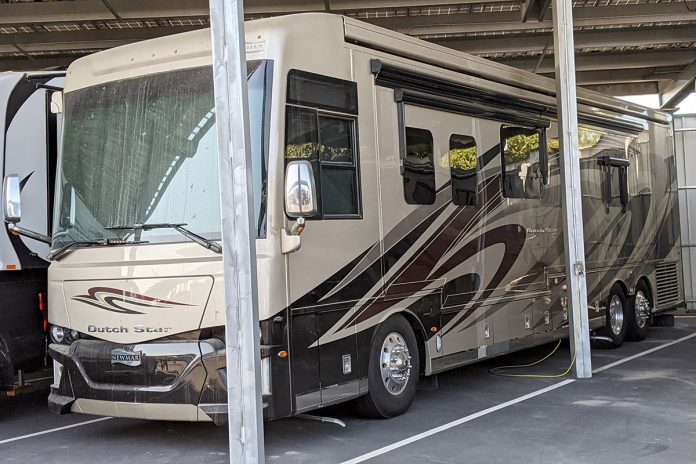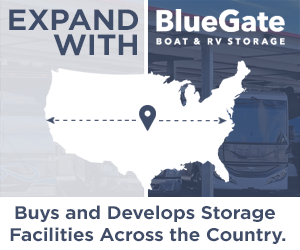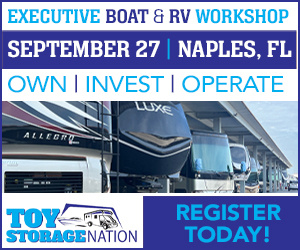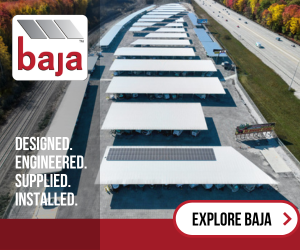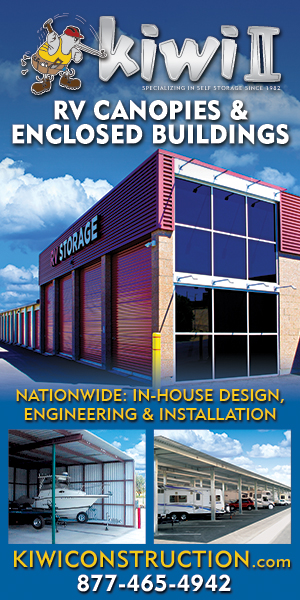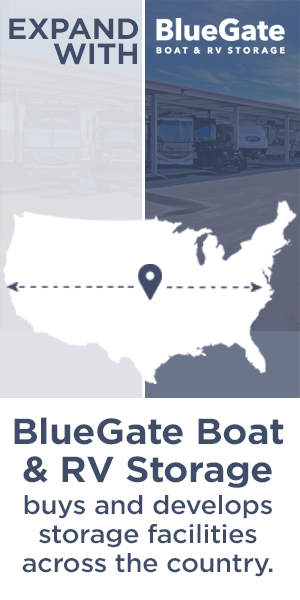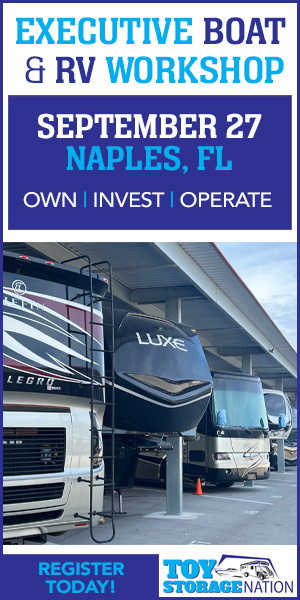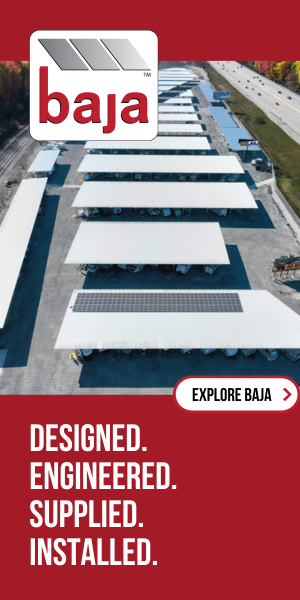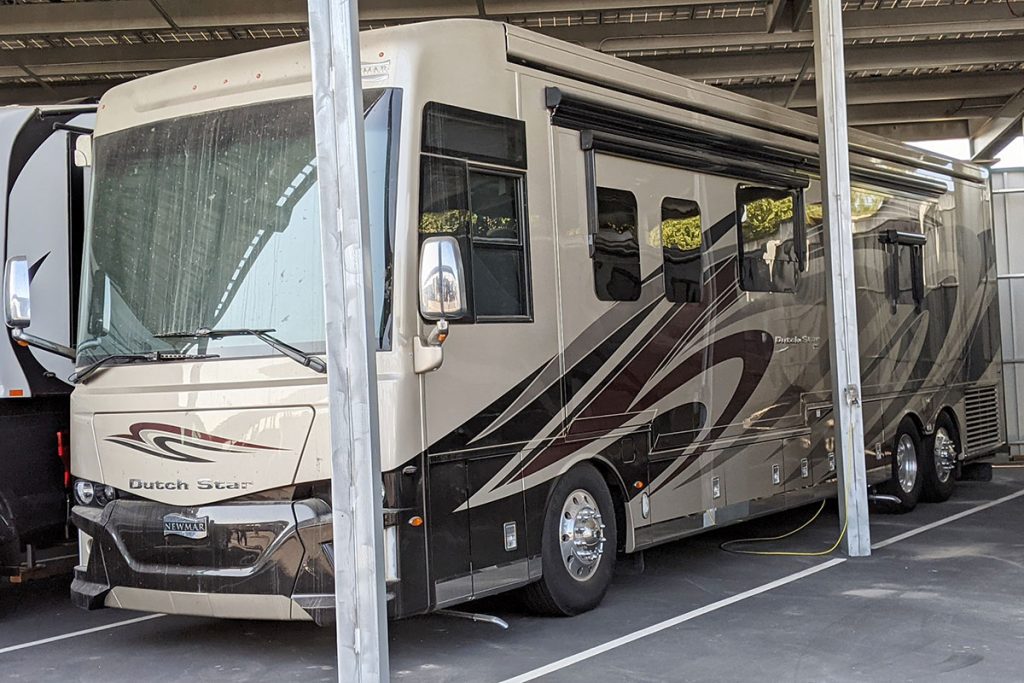
The different types of RV storage most commonly used are outside – which includes either covered or uncovered parking spots, and indoor facilities – which can range in having zero to several amenities and perks. This article highlights the benefits of each so you can gauge the options available and select the best RV storage solution for your situation.
The 2 Biggest Problems All RVs Have In Common
Whether your clientele owns a fifth wheel, a lightweight or travel trailer with a pop-up camper, class A, B, or C RV, their two biggest concerns are money and storage location. Home Owner’s Associations (HOAs) are increasingly prohibiting RV storage in residential neighborhoods, and even without any prohibitions, parking a house on wheels or a large camping trailer at home takes up a lot of precious real estate.
And this doesn’t supply the necessary security from theft and weather that such an expensive investment in recreation warrants, either. All of the materials RVs are made out of are susceptible to the elements – even fiberglass will degrade and become chalky from the sun’s ultraviolet rays, not to mention what havoc hail, freezing temperatures, and rodents can wreak both inside and out. As you probably can guess, different types of RV storage are going to add to the cost of an expensive toy after the fact, with indoor storage often hundreds of dollars more a month than outdoor.
Motorhomes come in various sizes. This is something that you and your staff will need to be aware of, whether individuals are searching for adequate space outdoor or indoor. Here are the sizing specification of motorhomes.
- Class A Motorhome – these range from 26 to 45 feet long and up. These are typically the biggest RVs on the road, and finding indoor storage big enough to accommodate them will be a challenge.
- Class B Motorhome – most of these range from 17 to 23 feet long. A lot of class b’s are van-style RVs, giving you a lot more versatility when finding RV storage either indoor or outdoor.
- Class C Motorhome – these typically range from 21 to 41 feet long. Built on van or truck frames, these, too, can be challenging to find indoor space for.
When looking for RV storage specifically designed to accommodate them, here are some of what you can expect as far as benefits, starting with outdoor facilities.

Outdoor – Uncovered
Outdoor, uncovered RV storage is the easiest to supply, but unless there are some added perks like waste-water drainage and electrical hook-ups onsite it’s not much better than parking at home. The type of ground some of these rental lots provide is important to consider, however. Pavement is the best for the vehicle’s health over gravel, and soft ground or dirt will turn to mud – making cleaning a hassle and getting out after recent rainfall possibly difficult.
Security from theft could be better from a paid, outdoor, and uncovered parking spot if they have a coded or key entry system, and 24-hour cameras and lighting. And prices are typically the easiest to stomach out of all the other options, starting on average from around $30 to $100 per month.
Uncovered RV storage does not protect the vehicle from the elements; therefore, there are better solutions to offer.
Outdoor – Covered
Covered outdoor RV storage is any parking spot with a canopy or overhead roof. While this option will be more expensive to construct than uncovered parking — some places charge significantly more for covered parking — it is almost always much less expensive than indoor storage.
Covered outdoor storage for RV’s are canopies and carports, and they can offer some decent protection against weather elements like rain, lightning, sunlight, and hail — though they won’t be able to give full protection. Freezing temperatures or heat can still get to RVs beneath a canopy, as can rodents and other pests.
You should also take into consideration any other amenities that you can provide, like sewage disposal, electrical plug-ins, and if the grounds are paved or not. An ample amount of extra space outside of the canopies will make it easier to maneuver when parking or leaving.
Basic Indoor RV Storage
The most basic types of indoor RV storage are fully enclosed structures with enough room for RV or boat storage. The charge for indoor storage will vary depending on the number of amenities, but will almost always be hundreds of dollars more than any type of outdoor parking, whether uncovered or covered. It may also be harder to find as demand for indoor storage units has picked up significantly over the last few years. Many designed to handle large RVs and boats have been popping up near state parks and recreational water bodies around the country, as storing them here is a convenience for many owners who would rather have them on hand at their outdoor destinations than make the transport.
The first obvious benefit of even the most basic of indoor storage is your RV being shielded on all sides from rain, sun, and all the elements. Older RVs especially can degrade quickly when left outside during hot summers or freezing winters. The time spent cleaning and waxing will also be reduced – saving your client’s money and time. You should consider the tradeoff between the high prices of indoor storage with the added years of life it could add to your client’s RV by removing it out of the weather; thus, a higher rent charge.
Theft and vandalism protection is the other significant improvement of even the most basic indoor storage. Most facilities will at least have surveillance cameras and lighting around the property to discourage break-ins. Having RVs out of sight within an enclosed structure generally does the same by inhibiting a would-be thief’s motivation. Again, the more you have to offer your renters, the more rent you can charge.
Executive Level Indoor Storage Facilities Specializing In RV And Boat Storage
In the self-storage industry, businesses that cater to RV and boat owners have typically always been a small niche service. Marketing ploys and amenities offered have been innovative, to say the least, to attract the smaller customer base of RV and boat owners, but thanks to the boom in the recreational market — especially during the COVID19 pandemic and social distancing practices — this segment of the industry is uniquely positioned for phenomenal growth and lucrative returns on investment.

RVs – The Recreational Vaccine For Economical Shutdown Boredom
According to the RV Industry Association, the number of RVs being shipped since the start of the pandemic has been setting records month after month. A survey of manufacturers in September 2021 showed that 55,014 units were shipped compared to 41,600 in September 2020, an increase of over 32% and an all-time high over the previous record set in March 2021. The push has come from among all demographics, and not just in sales but RV rentals, too. The pandemic caused massive shutdowns in the travel and tourism industry, from hotels and airlines, parks and campgrounds, and more and more people realized the safety and freedom that RVs offered. And even after the economy has opened back up, the recent record numbers of RV ownership prove that people are sold on the idea.
And the data is likewise inspirational for boats, too. Research of consumer information from the National Marine Manufacturers Association shows that sales of boats and other marine products reached a 13-year high in 2020 and 9% higher than 2019 to $47 billion. Boat ownership increased all over the country, with dealerships reporting up to 40% of new and used boats being bought compared to 2019, and 2021 has still been better than any year before the pandemic.
All of these statistics show that the recreational vehicle industry has not only been immune to social distancing measures and a shutdown economy, but it has been thriving. This is because RVs and boats allow people to still have fun in a way that limits the risk of the virus, but why would sales remain up after a vaccine, waning positivity levels throughout the world, and a reopened economy? It could be because of a changed mindset about future prevention, or that the true joy and freedom of RV ownership have become recognized. Either way, the challenges of the present and future owners of RVs and boats to take care of their investment with good storage solutions will be growing for years to come, and the present supply is inadequate to handle the demand.
The Swelling RV Storage Consumer Base Means More Are Willing To Pay For A Higher Level Of Security And Amenities
With the growing number of RV and boat ownership comes a more robust market size of those willing to pay more for a higher level of security and amenities for their recreational investments. Builders and investors are taking notice and offering a level of benefits for RV storage that cost amounts that would have been difficult to ask before, but plenty of customers are now willing to pay these higher costs. Here is a look at some of the amenities that executive-level facilities are providing:
- Climate control – Climate-controlled storage units provide consistent temperatures throughout the year. Some even have humidity control. This is great for enhancing the longevity of RVs and boats because while indoor facilities alone can eliminate weather elements like rain and ultraviolet rays, hot or freezing temperatures can still degrade their materials over time. Any moisture in the air can also warp wood or cause upholstery to mold and mildew.
- Size – The size of an indoor storage unit is an important factor in its price, and the uptick in RV sales includes the entire spectrum of classes from A to C. And, usually, the larger and more expensive the RV purchased, the higher the probability that the owner is willing to pay handsomely for an indoor storage unit to protect it. It’s not unheard of for storage facilities specializing in RV storage to receive over $1000 a month on a unit large enough to accommodate a 40-foot vehicle.
- Access to Utilities – Customers are always looking for value, and on-site utilities provide a one-stop solution for the challenges of RV ownership. Executive-level facilities can entice prospective renters with a range of utilities, like dumping of wastewater both grey and black, electrical power hook-ups, and exterior and interior wash stations. Access to utilities will significantly boost the perception of the quality of a storage facility in the mind of consumers.
- Security – Most self-storage facilities have catered to people wishing to store smaller items that don’t have a place in the household, but the cost of an RV or boat is a significant investment that warrants a higher level of security. Customers are becoming increasingly more attracted to facilities that provide a reassuring level of security, with computerized gates, a heavy flood of lighting, and 24-hour security not just with cameras, but night-duty guards patrolling the area.
- Concierge service – The 5-star treatment isn’t just limited to hotels, and concierge service is becoming a high-end feature of RV storage sought after by new and experienced owners alike. Customers can spend more time enjoying their recreational vehicles outdoors and less time on repairs with this in-house amenity. Some even offer linen service for your RV’s bedding and upholstery.
- Valet service – Not all first-time owners of an RV are comfortable driving them on the road, and some just find valet service more convenient. Many different types of RV storage facilities are beginning to offer to drive your RV to a nearby state or national park for you, and have it already set up before you arrive separately. They will also pick up your RV or boat and return it – cleaned – back to storage.









